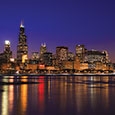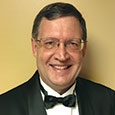.jpg)
“Everything we do is music.”
– John Cage
On March 5, 2017, the NBA’s New York Knicks announced shortly before a Sunday game against the Golden State Warriors that there would be no in-game music, video, or other entertainment during the first half. The reason? To let fans “experience the game in its purest form.” A chance, I assume, to hear sneakers squeaking on the hardwood, coaches yelling (cursing?) at players, fans heckling the referees, and balls swishing the net or clanking off the rim. Reactions to the experiment were mixed and several prominent players criticized the move.
I, however, applaud the effort, and hope the idea will catch on, particularly at collegiate football games. I went to an Auburn-Ole Miss football game in Oxford, Mississippi three years ago, the first major collegiate game I had attended in many years. The biggest change from the games I attended in the late 70s – and I noticed it immediately – was the noise level. The powers that be were pumping an incessant barrage of sound into the stadium; it made my pom-pom shake on its own. Worse, little or no regard was given for the bands that were playing. The jacked-up jock jams were even played over the Ole Miss band as it played the fight song. The game as a whole was just one extended noise-fest.
Society today does not know how to handle silence, but this is nothing new. Composer John Cage’s work 4’33" created quite the scandal at its first performance. Written in 1952, the piece consists of four minutes and thirty-three seconds in which the performer plays nothing. It was first performed by pianist David Tudor in Woodstock, New York, on August 29, 1952, for an audience supporting the Benefit Artists Welfare Fund, an organization supporting contemporary art.
Tudor placed the conventionally notated hand-written score with blank measures on the piano and sat motionless while using a stopwatch to measure the time of each movement. The score indicated three silent movements, each a different length, but when added together totaled four minutes and thirty-three seconds. The sound of the wind in the trees entered the first movement because the concert had forested trees as its backdrop. After thirty seconds of no action, he raised the lid to signal the end of the first movement. It was then lowered for the second movement, during which time raindrops pattered on the roof. The score was in several pages, so he turned the pages as time passed, yet played nothing at all. The keyboard lid was raised and lowered again for the final movement, during which time the audience whispered and muttered uncomfortably. When Tudor finished, he raised the keyboard lid and stood as the audience burst into an agitated uproar. Even during an avant-garde concert attended by modern artists, 4’33" was considered going too far, and if contemporary vitriolic comments on YouTube are any indication, things have changed little in that regard.
Musicians have long debated exactly what the meaning of 4’33" is, and I do not expect to end the debate here, but I think there are two important lessons that can be drawn from this piece.
First, there is no such thing as true silence, defined here as the absence of sound. In 1951, Cage visited an anechoic (echoless) chamber at Harvard University to hear silence. He expected to hear nothing. Instead, he heard two sounds, one high and one low. He was told that the first was his nervous system and the other his blood circulating. This experience convinced him that silence defined as a total absence of sound did not exist. He soon redefined silence as simply the absence of intended sounds or the turning off of our awareness.
Second, music is all around us. Cage believed that sounds of the environment constituted a music far more interesting than any heard in a concert hall. Yet today, things like blasting car stereos and ears plugged with earphones prevent so many from making intimate, aural contact with the world around them. People only hear only what they have chosen to hear; they cut themselves off from rich experiences that are free.
Cage’s 4’33" should inspire us to a deeper awareness of everything around us. At a football game, there are many wonderful sounds that should not be covered up by an overzealous stadium DJ: the buzz of people talking and laughing excitedly, the thud of a football being kicked 50 yards, cheerleaders firing up the crowd, vendors hawking their foodstuffs, the sound of a plane flying overhead, and, of course, the bands.
There is, of course, wonderful music performed at the Midwest Clinic by many of the greatest musicians in the world, but do we ever stop to hear music that is not listed in concert programs? Take the exhibits for example. They are full of an Ives-like cacophony – merchants demonstrating their wares, trumpets squealing, drumsticks clacking, saxes soaring into the altissimo, piccolos poking at eardrums, colleagues talking, friends laughing, tubas bellowing, drums competing with each other to be heard, ride cymbals chinging, and keyboards arguing for playing time. The streets of Chicago have a music you have to walk outside to hear, and area restaurants don’t just have a lonely pianist for music. Sit and listen and you’ll hear free music of a different sort.
So, as you go to Midwest, think about taking in more sounds that just what you hear in the music halls. At some point, sit back for a minute or so, maybe even for four minutes and 33 seconds, and soak in the experience. It may be the best concert of your week.






